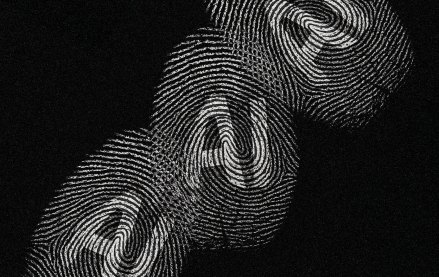Join us Dec. 1-3 in New Orleans for the Digiday Programmatic Marketing Summit

The shift to native ads that more closely resemble site content has proven effective for publishers, but the predicted marriage of native advertising and programmatic buying techniques has so far largely failed to materialize.
The promise of programmatic native — other than combining two industry buzzwords — was the best of both worlds: the efficiency and targeting of programmatic with the creativity of native advertising. But some believe the enthusiasm hasn’t yet matched reality, as programmatic native channels face low demand from buyers.
“Publishers have plenty of options to sell. Buy-side is where the problem is,” said Mani Gandham, CEO for content-marketing platform Instinctive. “[Ad exchanges today] barely have any fill for their supply partners. Real programmatic native demand remains to be seen.”
Gauging the programmatic native industry is difficult because of the inherent murkiness around the terminology. Most commonly deployed native ad types include sponsored articles, in-feed units, paid search, promoted listings and in-ad that is surrounded by relevant editorial content, according to the Interactive Advertising Bureau. (Many don’t think that outstream video and in-image ads are native advertising — they are rich media at most.)
For many marketers, the majority of their native ad budget goes to social networks like Facebook. Outside of Facebook, a big chunk of what is left goes to premium publishers’ content studios (not via automation). The leftover is spent on in-feed partners and native ad networks, according to agencies and vendors interviewed for this article.
“There are very little native inventory on ad exchanges,” said Rajeev Goel, co-founder and CEO for publisher-facing ad platform PubMatic. “Native is not our biggest focus at the moment because the inventory is nascent.”
But Cristina Freeman, senior media director for ad agency PMG, argued that there’s definitely a demand for native ads on ad exchanges as her team has worked with Sharethrough, TripleLift and Teads. By running programmatic, her team saw 50 percent lower in CPM pricing than running with native networks directly. But the issue is, she added, that “we cannot verify what a native ad exactly looks like on a website.”
Meanwhile, Dan Greenberg, CEO for Sharethrough, emphasized that the company is “seeing exponential growth in brands spending through real-time bidding for native ads.” Brands that are buying through its ad exchange have increased from 292 in 2015 to 2,104 to date this year, and RTB-based buying has grown by more than 500 percent in less than 10 months, with a focus on video. But the company declined to detail the precise revenue figures, impression volumes or the number of ads it is transacting.
“Programmatic native is here, and very real,” said Greenberg.
Ari Lewine, co-founder and chief strategy officer for TripleLift, is also seeing “an enormous growth in programmatic native demand” as his company has transacted more than 40 billion native ad impressions programmatically over the past three months, up 300 percent from the previous quarter, he said. And its native exchange has integrated 62 DSPs to date. Its most popular native ad formats include video, cinemagraph and in-image or story, according to Lewine.
From an advertiser’s perspective, R/GA’s media director Andrew La Fond is running test buys with native marketing platform Bidtellect for one client, with more of a managed service model. “We haven’t had the right client opportunity and the time to experiment with the self-serve programmatic native options,” he said.
La Fond explained that not every client has the content needed to employ native and that agencies don’t necessarily have the scope to create, say, recipes for a consumer packaged-goods brand or articles on financial management for a bank. And it could take months for some clients to get budget, create content and get approval, because programmatic native may not be a default part of the workflow.
“A brand may say, ‘We don’t have additional non-working budget this quarter, but maybe next quarter,’” he said. “For better or worse, programmatic video uptake may have been aided by the fact that you could run an existing 15-second or 30-second TV spot.”
At the moment, the sell-side seems to be moving faster than the buy-side in driving programmatic native, as most native ad networks are becoming SSPs. Meanwhile, Google added programmatic support for native ads on mobile last year, and it finally extended the feature to desktop for publishers last month. But many demand-side platforms haven’t built out the technology to support native and that’s why there’s just “a reasonable amount of demand,” said Jay Friedman, COO for programmatic company Goodway Group.
“There’s still very little programmatic native today, but this could change overnight if Facebook brings their demand over,” said Instinctive’s Gandham. “It remains to be seen though when this will go live, whether they focus more on display or native, and whether marketers would buy other native outside of Facebook considering the highly inconsistent quality of user experience on the open web.”
More in Media

Ranking is out, visibility is in as publishers chip away at AI search optimization
In the AI era, measuring pageviews isn’t enough — publishers need a new metrics stack that tracks how they are cited in AI engines and ties it all to clicks and revenue.

How U.K. news group Reach is diversifying traffic sources amid zero-click threat
Reach is diversifying beyond Google by leaning on news aggregators and monetizing Facebook engagement to offset declining search traffic.

How Forbes is using ChatGPT referral data to create audience cohorts
Semrush and Similarweb provide information, including the prompts that led an AI platform user to click through to a publisher’s site, that Forbes is able to use to learn more about its AI-referred audience’s interests.





